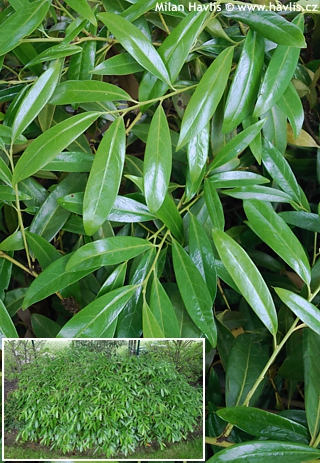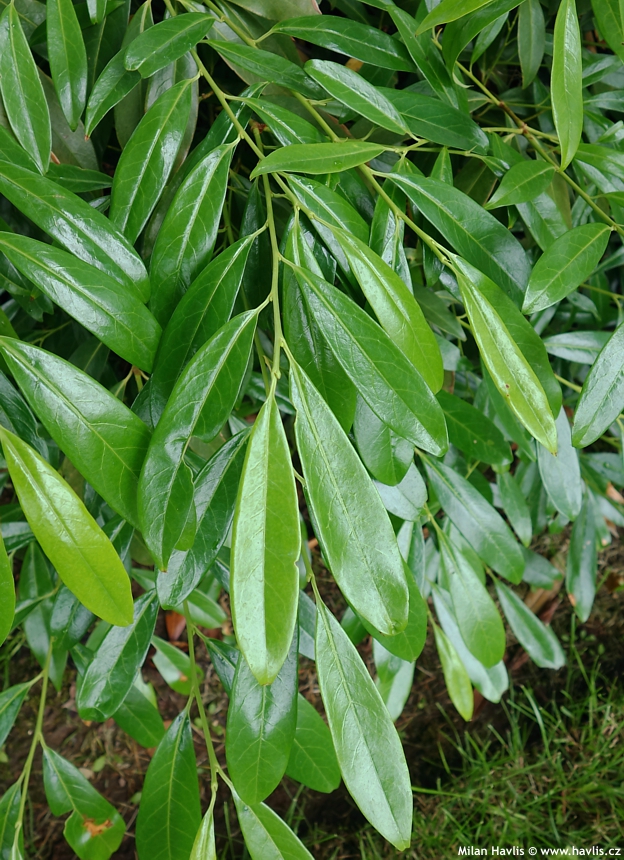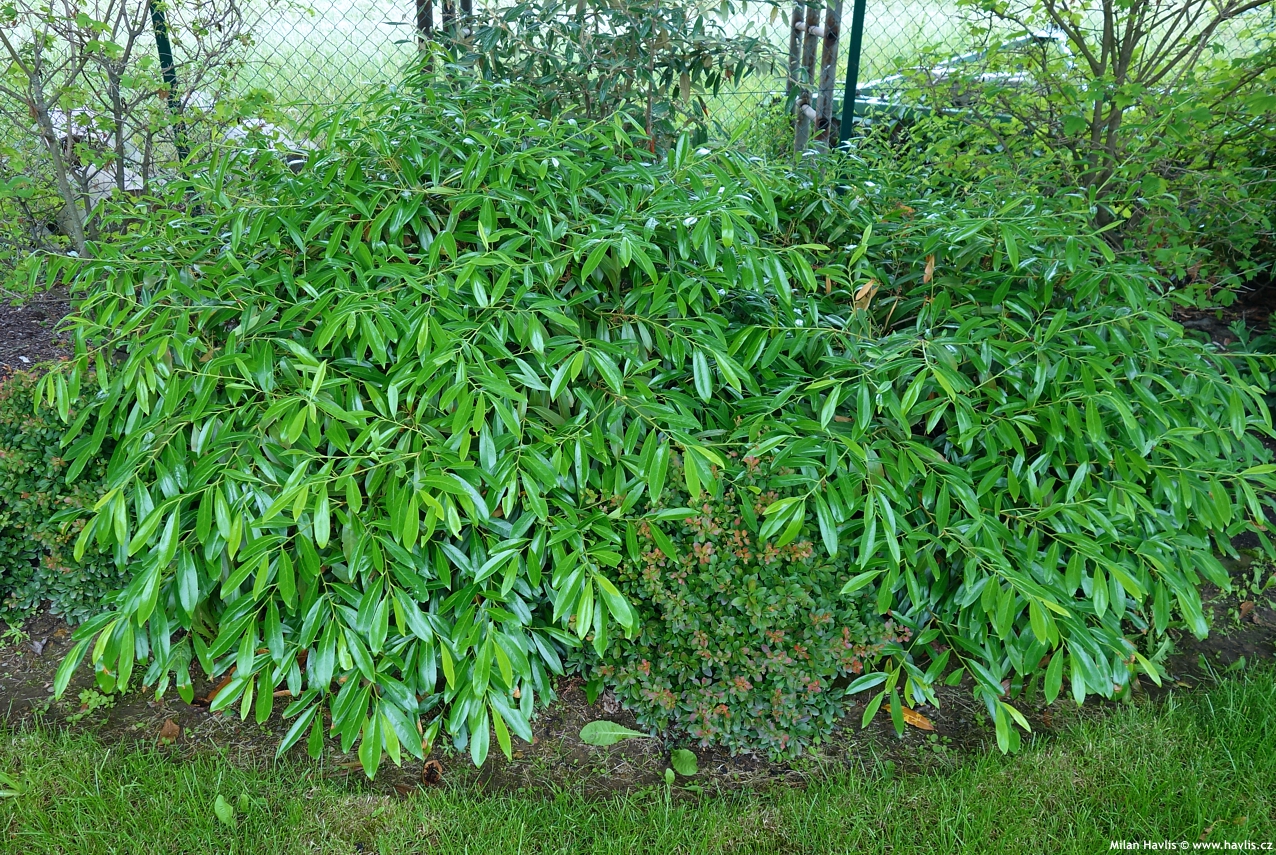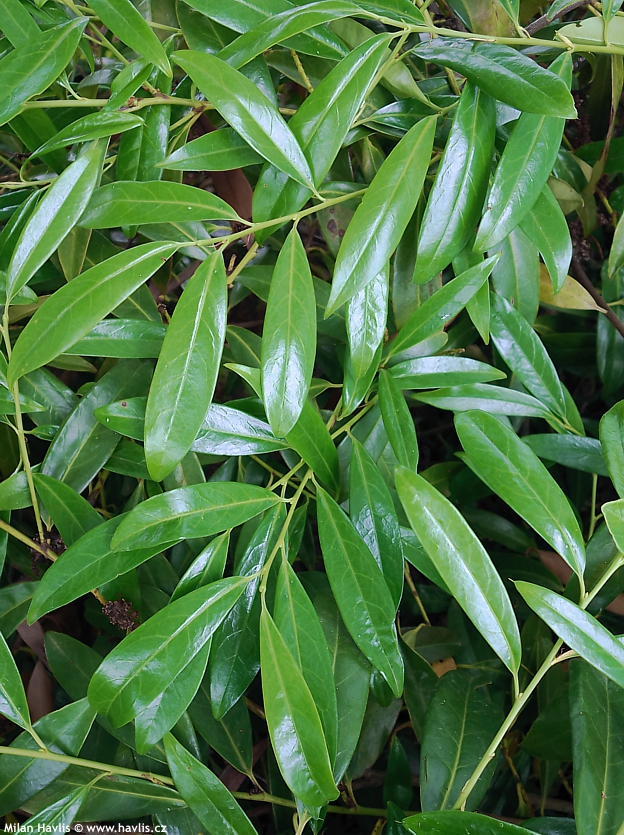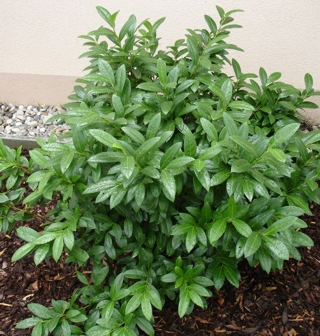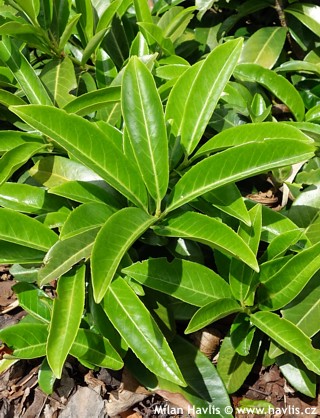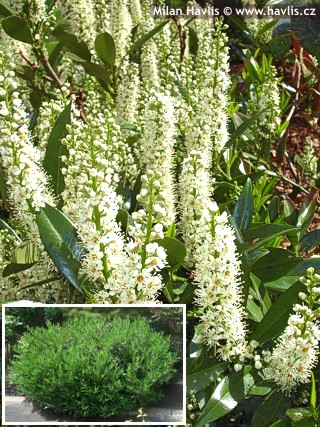Prunus laurocerasus 'ZABELIANA' cherry laurel, common laurel, English laurel
size/type
medium-sized shrub,medium-sized shrub
usual height
1-1,3m
usual width
1-3m
leaves
evergreen broadleaf
colour of leaves
flowers
less showy but noticeable
colour of flowers
blooming time
April-May
location
full sun to shade
soil type
acidic (peaty)
soil moisture requirements
evenly moist but well-drained
USDA zone (lowest)
5b (down to -27°C)
winter protection
for zone 5+6

for zone 7

categorized
Prunus
We are specialists in evergreen plants and offer the widest possible range of quality plants. English (cherry) laurel is probably the most common and reliable species.Zabeliana is an old variety whose birth dates back to the end of 19th century as it was introduced in Germany in 1898. There are no extent notes or articles about it, but it is believed to have been found by accident by a German botanist Hermann Zabel (1832-1912) who was already in his late 60’s when he spotted a natural mutation in the midst of trial fields of spireas. Those were the plants he studied thoroughly but obviously as a plant lover he could not have let go of an entirely different plant he’d not seen until then and preserving it for future generations made him immortal as the plant received his name.
Description of the plant:
Zabeliana cherry laurel is quite unique in its family. Its evergreen, leathery, deep green and highly glossy leaves are much narrower than on most varieties and arranged alternately alongside thin and very flexible, willow-like, arching branches. They grow about 30 cm per year and form a handsome, arching shrub, ideal for zen-style gardens thanks to relaxed atmosphere they can create. Cherry laurels have compound inflorescence made out of small, white, fragrant flowers that appear in April and May. They are followed by very ornamental fruits which, as recent studies confirmed, are not poisonous. Only seeds from unripe fruit if properly chewed may cause discomfort as they contain the same toxin like bitter almonds (source: Plants For A Future - www.pfaf.org). If you want to prune it, do so in mid spring before new leaves emerge or in mid summer.
Laurels need slightly deep and fertile, acidic, moist soil, and extra watering in frost-free periods in winter to prevent from drying out before the ground gets frozen. It will thrive in full sun or part shade and will also tolerate being grown in full shade where it will most likely lose its shape. It seldom suffers from chlorosis (leaves turning yellow owing to lack of iron in the soil) but when it does use a special liquid soil pH balancer to keep it acidic which will help the plant absorb iron. Zabeliana is renowned and popular for its hardiness as it withstands -25 °C (USDA zone 5b) without any damage.
Last update 19-09-2021
QUICK PRICE OVERVIEW
CURRENTLY SOLD OUT
WANT TO TRY A SIMILAR PLANT?












